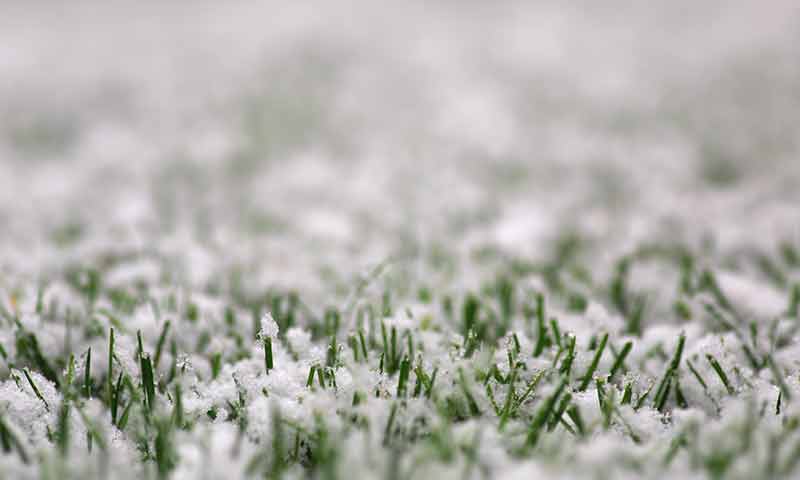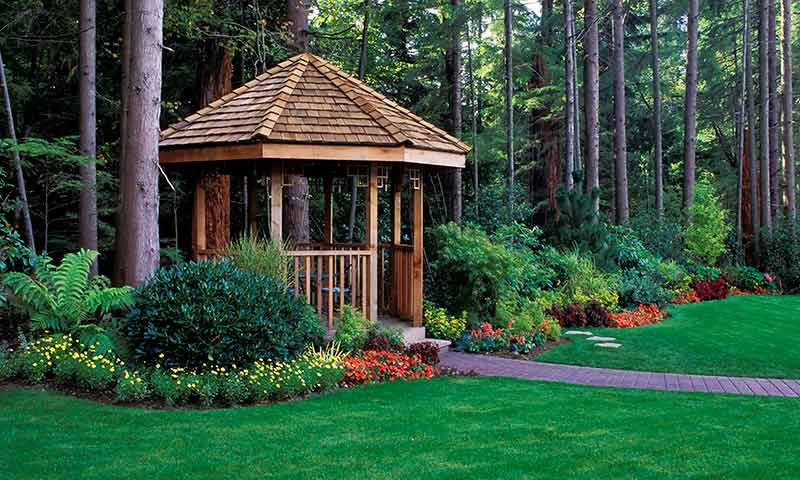All You Need to Know About Cool Season Grass
When many homeowners envision their ideal lawn, cool-season grasses are the kind of lawn that comes to mind. With rich color, lush growth and textures that feel great beneath bare feet, cool-season grasses epitomize the classic lawn, but they're not for every lawn owner.
If your lawn lies in the northern half of the United States, these grass types offer the best choices for your lawn. If you live farther south, warm-season grasses probably suit your lawn best. The following common cool-season lawn grasses create thick, lush, beautiful northern lawns:

Kentucky Bluegrass - An aggressive, self-repairing grass valued for its blue-green color and excellent cold tolerance, Kentucky bluegrass spreads via underground stems known as rhizomes. Plentiful sun and regular irrigation keep this grass looking and performing its best.
Tall Fescue - The most drought- and heat-tolerant of the common cool-season lawn grasses, with a bunch type growth habit tall fescue grows deep, resilient roots. In addition to growing in the country's northern region, tall fescue excels across the country's midsection, where climates transition from cool to warm.
Perennial Ryegrass - Quick-growing, bunch type perennial ryegrass offers the fastest germination and establishment times of any common perennial cool-season lawn grass. It's a favorite component in seed mixes for erosion control, athletic fields and lawns for active families.
Fine Fescues - An essential ingredient in dense shade seed mixes and repair products for shady lawns, fine fescues have the greatest shade tolerance of any common cool-season lawn grass. These cold-tolerant grasses include both bunch type and spreading types.
Most northern lawns contain a mixture of these cool-season grass types, combining the best qualities of each one to create a versatile, adaptable, rich green lawn.
Keep these five steps in mind when caring for your cool-season lawn:
- Match your grass seed to your lawn's sun and shade
- Water to promote deeper root growth and discourage disease
- Mow to maintain your lawn's recommended mowing height
- Stay on top of summer heat, drought and dormancy
- Watch for winter damage and make quick repairs

1. Match your grass seed to your lawn's sun and shade.
In general, all lawn grasses prefer abundant sunlight, but most lawns include some shade. By matching grasses to your light conditions, you help ensure all areas of your lawn do well. Seed mixes such as Pennington Smart Seed Sun & Shade contain a mix of grass seed for sun and shade to help achieve this goal. Kentucky bluegrass flourishes in full sun. Tall fescue and perennial ryegrass tolerate light shade, but fine fescues grow well in shaded lawn areas with as few as two to four hours of direct sun.
2. Water to promote deeper root growth and discourage disease.
Most established cool-season grasses need about 1 inch of water per week from rainfall or irrigation to stay healthy and green. But how you water your lawn makes a difference. Frequent, shallow watering encourages roots to stay close to the surface, where they're more vulnerable to heat and drought. Deep, less frequent watering encourages roots to grow deeper, where they're protected from environmental stress. Watering early in the day allows grass to dry before nightfall and helps prevent common lawn diseases.
3. Mow to maintain your lawn's recommended mowing height.
Lawns do best when you mow according to their growth and height, not the calendar. It's important to never remove more than one third of the grass's height in a single mowing or you'll impair healthy root growth. Repeatedly mowing too short also weakens your lawn and puts it at risk for lawn weeds, disease and drought. During peak times of growth, you'll need to mow more often to maintain proper height. During hot summer months, gradually raise your mowing height. Then gradually reduce it again in fall.
4. Stay on top of summer heat, drought and dormancy.
Cool-season grasses grow best in areas with moderate summers and cold winters. Extreme, extended summer heat can cause these grasses to go dormant and turn brown. While they typically bounce back with irrigation or when normal conditions return, the varieties you choose for your lawn make a big difference. Once established, drought-tolerant Pennington Smart Seed grasses require up to 30 percent less water than ordinary grasses. Developed through years of industry-leading research, these water-conserving varieties also stay green up to three weeks without watering.
5. Watch for winter damage and make quick repairs.
Cool-season grasses do well in cold weather, even staying green under snow, but northern winters present some other risks for lawns. De-icing salts used on sidewalks and roadways can build up in soil and injure grass. Snowblowers and shovels leave tracks and divots behind, and fungal lawn diseases such as snow mold sneak in. Do a thorough fall lawn cleanup and maintenance to ensure your lawn is free of leaves and debris, then inspect it as soon as snow melts. With premium products such as Pennington One Step Complete and Pennington Lawn Booster, you can repair lawn damage and get a thicker lawn fast
By choosing the best cool-season grasses for your lawn and giving them the care they need, you can enjoy the thick, lush, classic green carpet you desire. Pennington is committed to producing the finest in grass seed and lawn care products, so you can grow a lawn you're proud to call your own.
Always read product labels thoroughly and follow instructions.
Pennington, Smart Seed and One Step Complete are trademarks of Pennington Seed, Inc.



